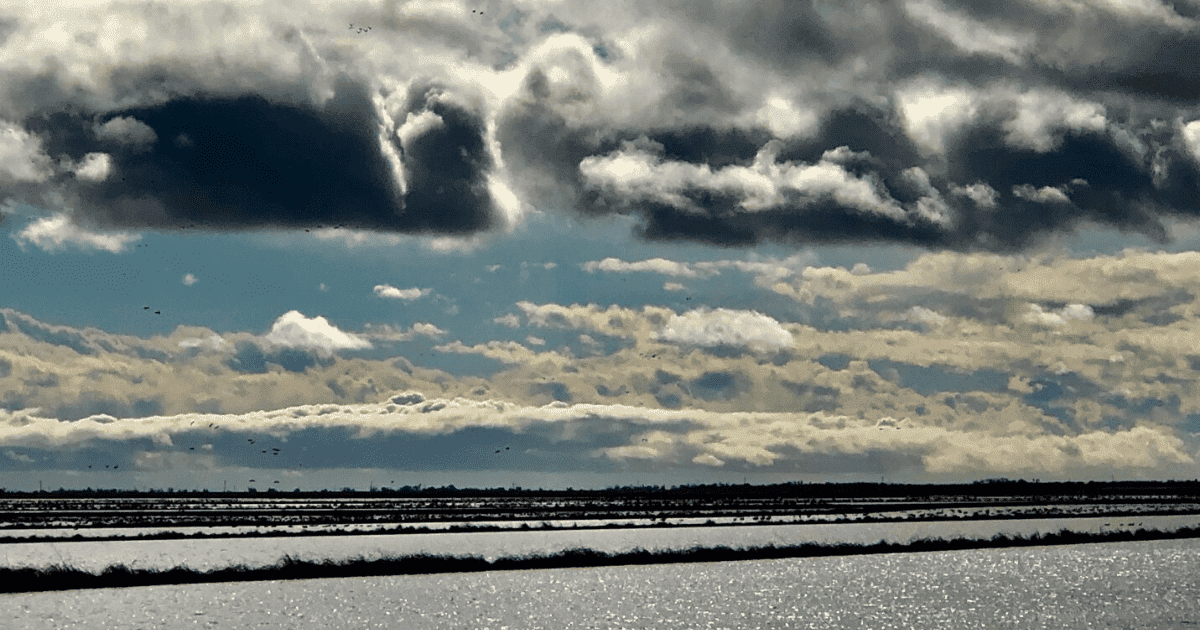New Yolo Bypass Fish Passage project approved
A big step towards the largest floodplain enhancement effort on the West Coast has just taken place. The Department of Water Resources’ Yolo Bypass Salmonid Habitat Restoration and Fish Passage Project has secured final approvals for implementation. The project will retrofit Fremont Weir to allow for more frequent inundation of Yolo Bypass floodplain, creating more floodplain habitat and allowing greater access to that habitat for threatened Central Valley salmon runs. Lowering the gate height of the weir allows more water and fish to flow out of the river and onto the food-rich floodplain during small storm events.
According to CalTrout Scientist, Dr. Jacob Katz, “This is a first-of-its-kind, multi-benefit project, that integrates a 21st century scientific understanding of fish and rivers into water management. It will allow baby fish onto floodplain wetlands to grow, and adults to re-enter the Sacramento River to spawn while protecting current agricultural and flood protection uses of the bypass. It’s a real win-win-win.”
Dr. Katz and CalTrout’s Central Valley Program have worked for nearly a decade on floodplain science in support of this unprecedented infrastructure upgrade. Their work shows that flood protection, farming and fish and bird habitat restoration are all compatible land uses on Yolo Bypass, the Sacramento River’s largest remaining floodplain.
Read below to learn more about the Yolo Bypass Salmonid Habitat Restoration and Fish Passage Project.
This article was originally published on the Woodland Daily Democrat on July 20, 2019
Work at Fremont Weir will allow salmon to travel between waterways
The Department of Water Resources has secured final state and federal approval for a project that will expand a migration corridor for fish to the Yolo Bypass, the Sacramento Valley’s main floodplain.
The project is part of the largest floodplain restoration action on the West Coast and demonstrates a commitment by DWR, the State Water Contractors, and the Bureau of Reclamation to protect native fish in California, while safeguarding agriculture, according to Erin Mellon, assistant director of public affairs for the DWR.
The project aligns with Gov. Gavin Newsom’s recent executive order calling for a Water Resilience Portfolio that creates a suite of actions to secure healthy waterways and ecological function through the 21st century.
The project, formally titled the Yolo Bypass Salmonid Habitat Restoration and Fish Passage Project, will enhance flood plain habitat for endangered species while protecting current agricultural and flood management uses of the bypass.
“This is the quintessential multi-benefit project,” said DWR Director Karla Nemeth. “It improves fish survival and habitat while preserving the Yolo Bypass as a vital hub for agriculture and flood protection. We look forward to working with the region’s landowners on this win-win project for people, farms, and fish.”
The approximately $190 million project will construct a two-way fish passage gateway at the head of the Fremont Weir, a 1.8-mile concrete wall that provides flood protection to Sacramento and surrounding communities.
The 100-foot-wide gateway, or “big notch,” will open each winter, allowing juvenile salmon to move from the Sacramento River onto the floodplain and then back into the Sacramento River at Cache Slough. Providing fish access to the food-rich floodplain will expand survival rates for native fish on their migratory journey to the Pacific Ocean.
The project will also allow adult salmon, steelhead, and sturgeon to more easily access the Sacramento River from the bypass.
“California’s threatened fish species are the result of a water and flood system built before people understood how rivers worked or how fish used them,” said Jacob Katz, senior scientist with California Trout. “This first-of-its-kind, multi-benefit project integrates a 21st century scientific understanding of fish and rivers into water management and allows baby fish onto floodplain wetlands to grow, and adults to re-enter the Sacramento River to spawn. It’s a win-win-win for fish, farms and flood control.”
This week, the project’s environmental impact report received final approval from state and federal permitting agencies, allowing the project to move forward with final design and permitting before construction begins in 2021. This project is funded by the Bureau of Reclamation and through State Water Project funds supplied by the State Water Contractors.
“We are very supportive of the efforts to increase fish access to floodplain habitat, a step towards meeting the state’s goals of protecting the natural environment while managing water supply,” said Jennifer Pierre, general manager of the State Water Contractors. “Greater access should help salmon grow bigger and increase their survival as they travel through the Delta and into the ocean, hopefully translating to increased populations.”
The project meets requirements of the state and federal Endangered Species Act, including the National Marine Fisheries Service 2009 Biological Opinion on the Long-Term Operations of the Central Valley Project and the State Water Project. The project will be a critical component of obtaining the Incidental Take Permit of the California Fish and Game Code for the long-term operations of the State Water Project.







